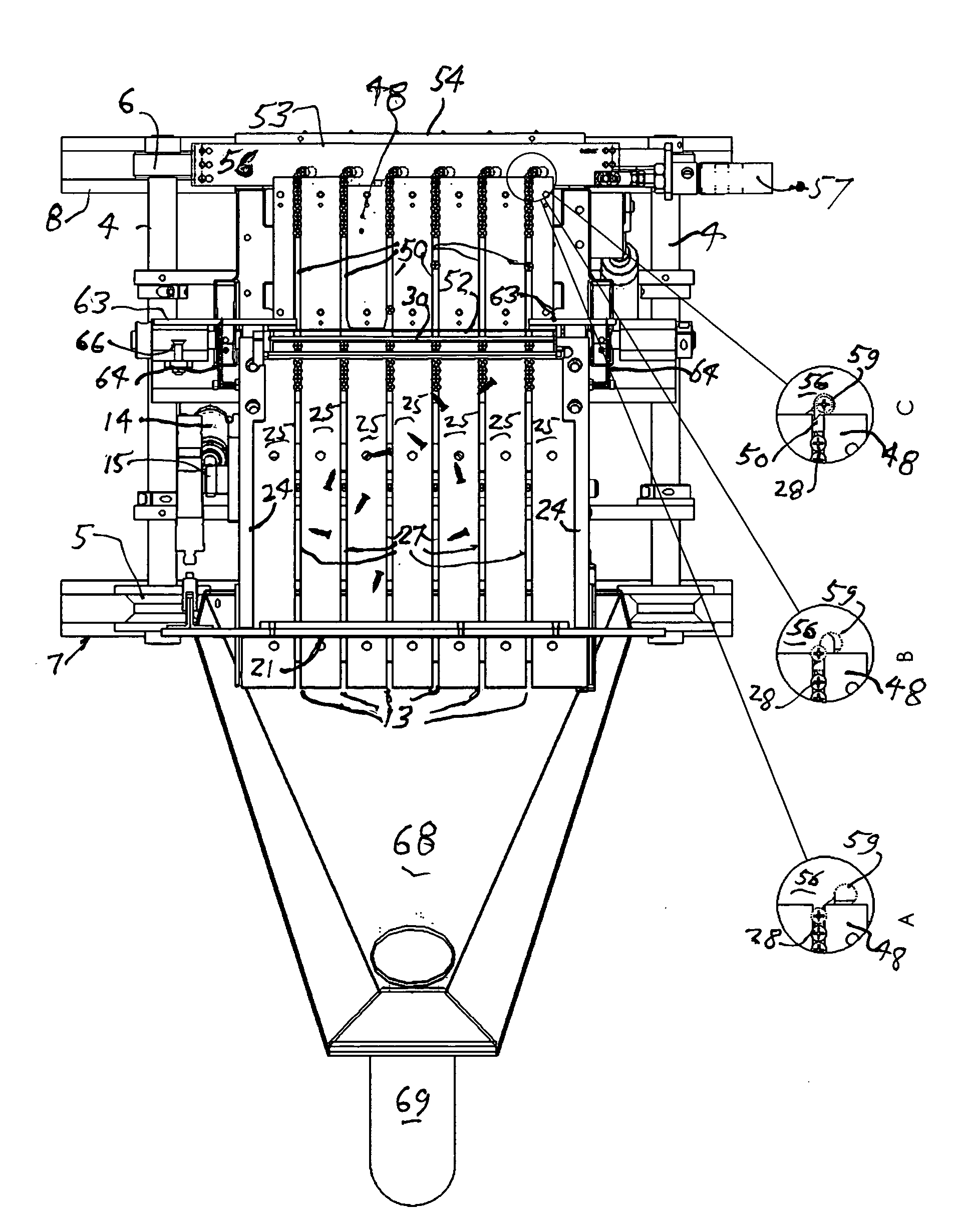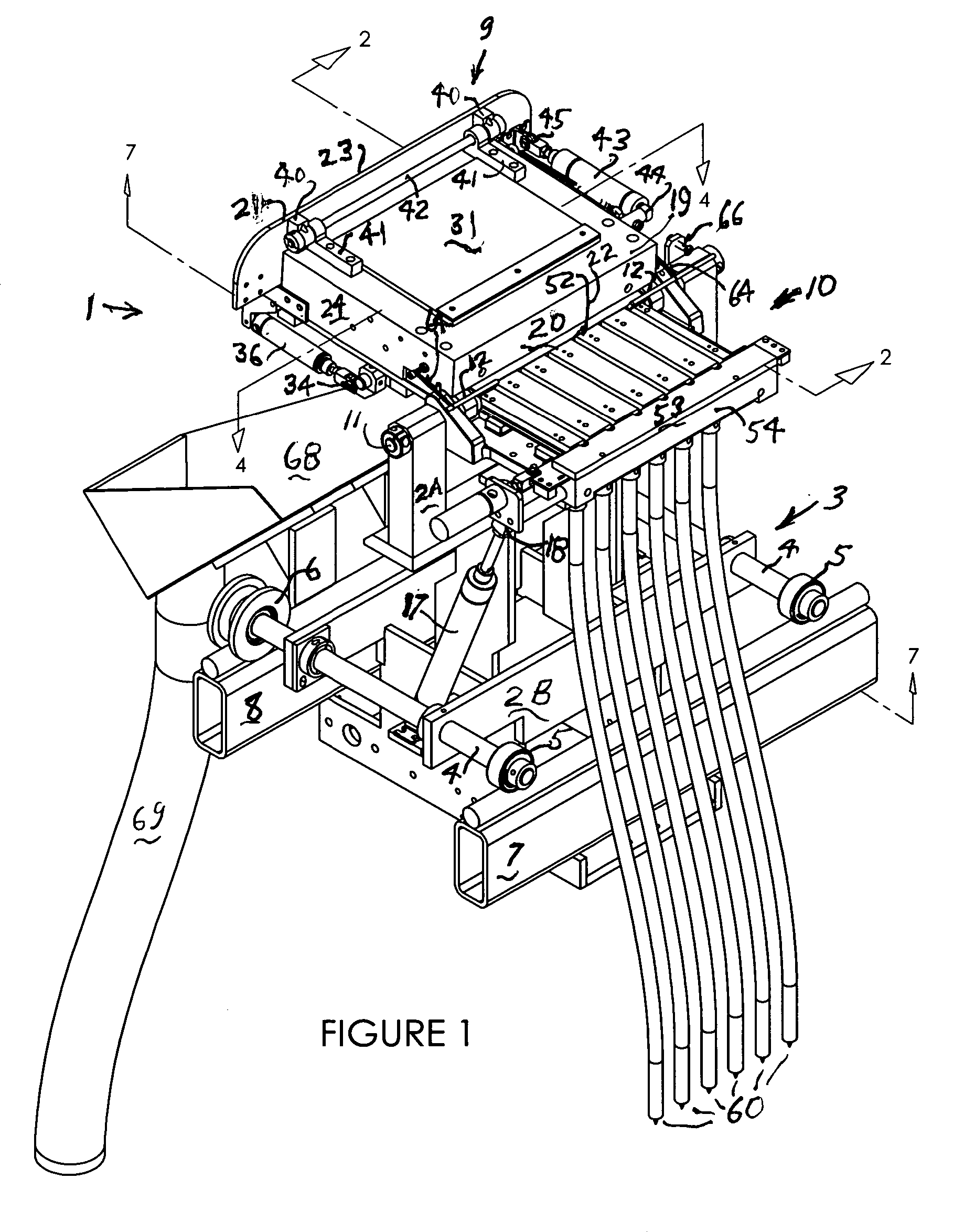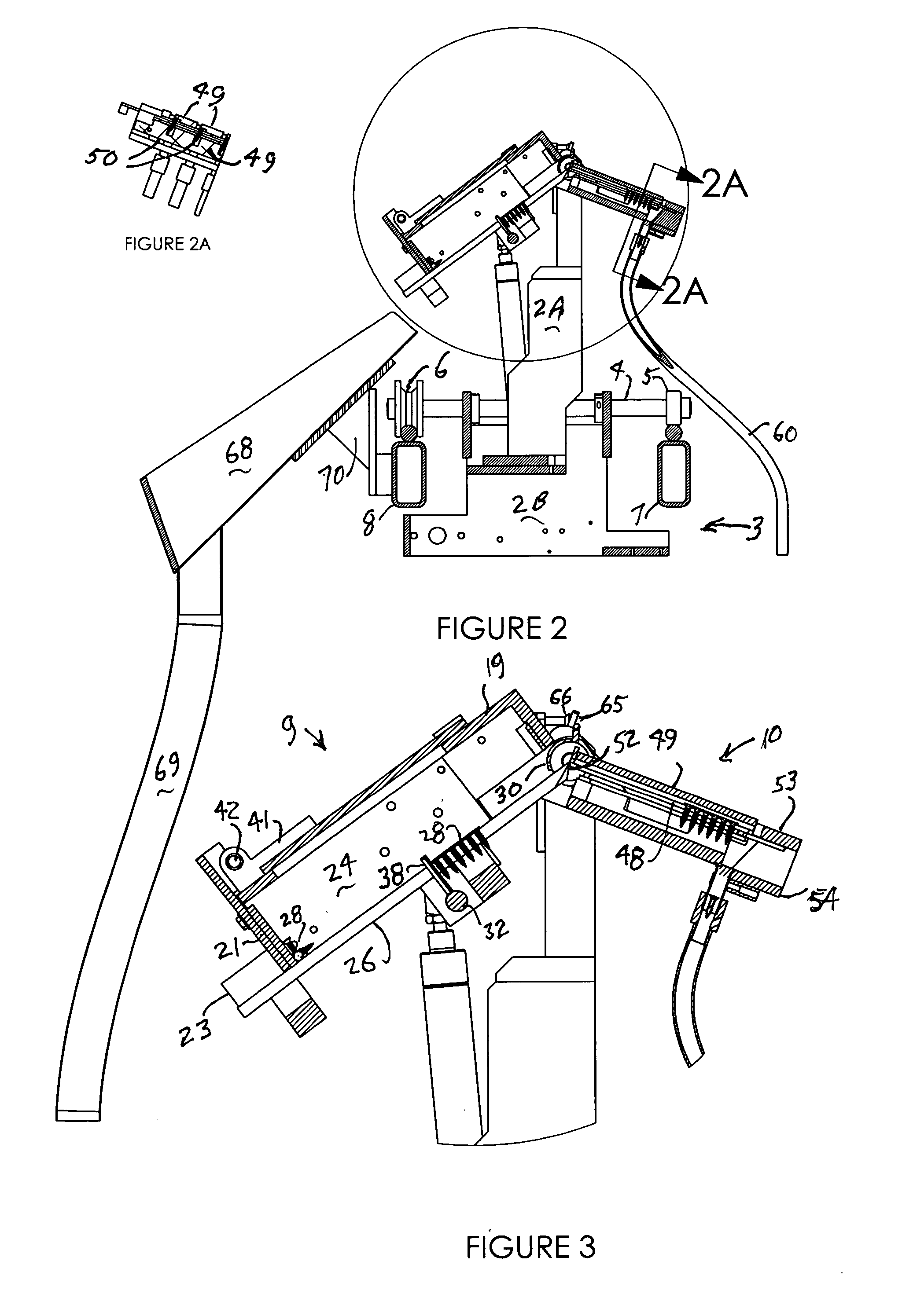Article feeder
a feeder and article technology, applied in the field of article feeders, can solve the problems of increasing the complexity of the feeder, requiring each substitution requires laborious and time-consuming clearing, so as to enhance the proclivity for articles and shorten the slide distance
- Summary
- Abstract
- Description
- Claims
- Application Information
AI Technical Summary
Benefits of technology
Problems solved by technology
Method used
Image
Examples
Embodiment Construction
[0023] The following description illustrates the manner in which the principles of the invention are applied but is not to be construed as limiting the scope of the invention.
[0024] The article feeders of this invention are intended for feeding screws and other workpieces individually to receivers usually for application of the screws in a fastening operation by automatic screw driving equipment. For this purpose they may be mounted for operation at a stationary site or on a carriage or the like for movement together with screw driving equipment to screw driving locations. In the embodiment described here, the screw feeder is mounted on a carriage for use with associated machinery for applying hinges to doors and door jambs, such as described in my U.S. Pat. No. 6,398,004. The carriage moves on rails to appropriate locations along with automatic screwdrivers, to which it supplies screws for automatically applying hinges at those locations.
[0025] Referring to the drawings, particul...
PUM
 Login to View More
Login to View More Abstract
Description
Claims
Application Information
 Login to View More
Login to View More - R&D
- Intellectual Property
- Life Sciences
- Materials
- Tech Scout
- Unparalleled Data Quality
- Higher Quality Content
- 60% Fewer Hallucinations
Browse by: Latest US Patents, China's latest patents, Technical Efficacy Thesaurus, Application Domain, Technology Topic, Popular Technical Reports.
© 2025 PatSnap. All rights reserved.Legal|Privacy policy|Modern Slavery Act Transparency Statement|Sitemap|About US| Contact US: help@patsnap.com



